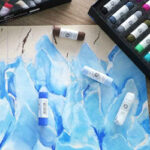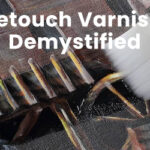Learn Beginner Graphite Pencil Drawing Skills
Graphite pencil drawing is a wonderful way to start your artistic journey and when beginning, it can be challenging to know where to start!
First, lets discuss: What is a graphite pencil?
A graphite pencil is made up of a graphite core enclosed in an plastic casing. The hardness or softness of the pencil is determined by the blend of graphite and clay, in the core.
The typical grading system ranges from “9H” very hard, to to “9B” very soft with “HB” marking the middle point. Harder pencils create lines and lighter marks more for writing, great for technical work while softer pencils make darker lines and are perfect, for sketching and shading
Possessing decent drawing skills seems like a logical, no-brainer foundation for all artists.
It seems like drawing skills are something that even professional artists are more or less proficient at!
A lot of people know Drawing On the Right Side of the Brain. This goes into more the psychology of, especially if you’re going to teach, how people see and learn when their drawing and kind of ways that you can kind of troubleshoot as you’re seeing them work, things that maybe they’re not catching that they can catch.
However, with work, family, or a busy lifestyle, a lot of artists don’t practice drawing enough to be truly proficient.
See tips, details and video

Graphite drawing is a popular technique used by artists
The allure of color is sometimes too great with limited work time, but then glaringly shows in the final product when something looks… “off”. Sound familiar?
Did you know that sometimes drawing what you don’t see is as important as what you DO see?
Sound cryptic? It’s not… Watch the video to learn some unique beginner drawing skills from Amy, and start applying them to your work!
We will feature tips and tricks that will jump start beginner artist’s skill levels, that even intermediate artists can utilize to help in their own artistic pursuits…. See Video
Jerry’s LIVE Episode #91 – Beginner Graphite Pencil Drawing
Featuring Top Brands: Cezanne, Soho, Kum, Maries’s and More
To start, gather the necessary materials, including a range of graphite pencils with varying degrees of hardness (such as 2B, 4B, and 6B), a good quality drawing paper or sketchbook, a kneaded eraser, a pencil sharpener, and any other preferred drawing tools.
See our recommended selection of: Drawing Supplies for Artists
Supply List: Beginner Graphite Pencil Drawing
In addition to our video lesson above here are some tips to help you get started:
- Get the right materials: Invest in a range of graphite pencils with different hardness levels (e.g., 2H, HB, 2B, 6B) to achieve varying levels of darkness and texture in your drawings. You will also need good quality artist sketchbooks or drawing papers, an eraser, and a sharpener.
2. Start with basic shapes: Begin by practicing drawing basic shapes such as circles, squares, and triangles. This will help you develop your hand-eye coordination and understanding of proportion and perspective.
Also See: 5 Ways to Improve Your Drawing Skills
3. Study light and shadow: Understanding light and shadow is crucial in creating realistic drawings. Study how light falls on objects and observe the different values (lightness or darkness) that occur. Practice shading to create depth and form in your drawings.
See Also: Why Shading is Important in your Sketches
4. Practice observation: Take time to observe your subjects carefully. Pay attention to details, shapes, and textures. This will help you develop your ability to capture the essence of what you’re drawing.
5. Start with still life: Set up simple arrangements of objects and practice drawing them. Still life subjects provide opportunities to study shapes, shading, and textures. They also allow you to control the lighting conditions and experiment with composition.
6. Develop your techniques: Explore different pencil strokes such as hatching, cross-hatching, stippling, and blending. These techniques can add texture and depth to your drawings. Experiment with different pressures and angles to create various effects.





